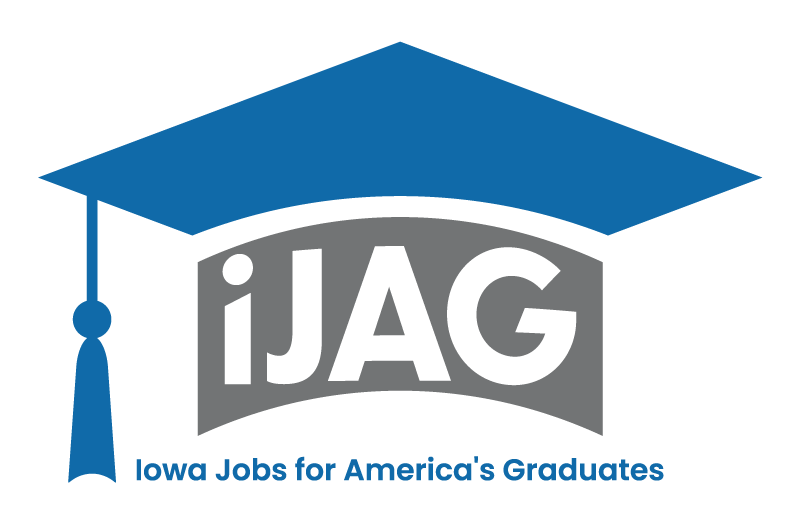12 takeaways from the Power Breakfast on AI
The Feb. 28 event brought up big questions on the future of education and business using learning machines

BUSINESS RECORD STAFF Mar 6, 2018 | 8:38 pm
9 min read time
2,060 wordsAll Latest News, Business Record Insider, Innovation and EntrepreneurshipThe future was the main subject at the recent Business Record Power Breakfast, “AI: The 4th Industrial Revolution.”
Panelists included Tej Dhawan, chief data officer with Principal Financial Group; Stephen Baek, machine learning expert at the University of Iowa College of Engineering; Kerty Levy, president of KNLWorks; Linc Kroeger, vanguard of Future Ready Iowa, Pillar Technology; and Donna Burkett, bureau chief of the Labor Force and Occupational Analysis Bureau of Iowa Workforce Development.
Here are 12 takeaways from the discussion noted by our reporting staff.
PERRY BEEMAN
Smart cameras
Ryan Davis, project manager for McClure Engineering Co., in an interview following the breakfast said his firm is working with state and local governments that use camera networks to explore using machine learning to guide how signals are run.
“We are working currently with clients to implement AI and machine learning to follow and learn traffic patterns,” Davis said. “If AI recognizes that traffic coming down Ninth Street is five minutes faster in the peak than it was yesterday, then it can switch over the phases of the traffic signals to work with that.”
“In my opinion as a traffic engineer, I will gladly tell anyone who will listen to me that the brains behind the traffic signal is in the cabinet. Ninety percent of all of America’s cabinets are outdated. Our cellphones are smarter.
“Our clients know that and are striving to do better, but at what cost? It always comes down to financials.”
Machine learning hits home
Several panelists mentioned how machine learning is already affecting daily life. Tej Dhawan’s kids ask Alexa for the temperature without giving it a thought. Our mobile phones tell us how long our commutes will be, based on live traffic data. Linc Kroeger appreciates the stay-in-your-lane technology in semiautonomous vehicles.
The power of Netflix
Tej Dhawan, the angel-investing, startup-loving data guy at Principal Financial Group, told the audience he knew this machine learning was for real when Netflix showed him. The product suggested he would like a program that he suspected was dicey.
“I would love to give credit for AI to my freshman teacher at Central 30 years ago, but like many freshmen, I never listened to him. What it really took was waking up sometime last summer when Netflix showed a show with a 98 percent probability that I would enjoy. Everyone who knew me would have said, ‘Absolutely not. He is not going to watch a show called ‘Abstract: The Art of Design.’ Netflix thought I would like it, and it has 20 years of history watching me. I watched the first episode, and through the rest of that Sunday I finished the series.”
Lifelong learning
One quote from Tej Dhawan: “The lifelong learners amongst us are the ones who are going to benefit the quickest, the most and for the longest period.”
KENT DARR
‘the key is transparency’
Naomi Hamlett, an economic development coordinator for the city of Des Moines, walked away from the Power Breakfast wondering whether the United States would even catch up to China in the application of artificial intelligence, primarily because we value our privacy.
The conversion of data to brainiac machines is a fundamental part of the process, and Hamlett pointed out that we Americans cherish our privacy.
“When you get into facial recognition and vital signs, there is going to be some pushback,” she said. “But from a local government standpoint, gathering data and finding patterns, there is definitely an application. The key is transparency.”
AI and housing
Eric Burmeister, executive director of the Polk County Housing Trust Fund, spends a lot of time looking for ways to increase the availability of affordable housing in Greater Des Moines.
He cajoles, occasionally, and appears on panels and participates in a range of task forces. One thing missing in the affordable housing debate is just how much do we need and what type of workers will use it. Artificial intelligence could provide answers to those questions.
“I think in a much larger sense what it’s going to do is it will help us plan for what sort of a workforce we’re going to have, it sounds like, 10 years, 20 years, 30 years into the future,” he said. “In many ways, that is what our housing needs are all about.”
Burmeister hears a lot about economic development projects that will create jobs, but fail to answer the question of where the workers will live.
“Sometimes when you’re in these meetings and you hear about all of these great new projects, you just have to ask, ‘Where are these people going to live?’ Maybe AI can provide the answer.”
To arms with AI in the war for workers
Jackie Johansen, director at Thiele Geotech Inc. in Urbandale, is one of those people who understand that if you want to think ahead, you have to do a fair amount of research into what has happened just over your shoulder.
Her pen was at high speed during the Power Breakfast, producing three pages of notes. “I just found this fascinating, and I’m looking at it through the lens of a professional in the Des Moines market, but also as the mother of a sophomore in high school,” she said. “I’m thinking about his skill set and my skill set and where they need to be.”
Companies that use AI to bring creativity and openness into their cultures will be better able to recruit workers, she said.
She has seen AI whittle away at job structures, while creating something new. While she was with Pella Corp., robots were introduced to operate chop saws. That meant people weren’t pulling the trigger on the saw, so they moved along the production line to locate and mark where the cuts should be made. Sure enough, the robots added that functionality. The machines couldn’t take care of themselves, though, so that task shifted to the people who had been pulling the triggers and making the marks.
She was pleased to hear panelist Tej Dhawan promote a liberal arts education, something that was not in vogue during her Gen X college days. “That surprised me,” Johansen said. Maybe she was processing for the future when she decided to get a liberal arts education back at Wartburg College in the early 1990s.
JOE GARDYASZ
Building an AI comfort level
During the Q&A, one audience member said that her consulting firm works with companies internationally to build chatbot technology applications, but that she has found business leaders locally aren’t as comfortable making the shift to AI technologies. In response, panelist Kerty Levy said that introducing organizational leaders to the basics of AI is an important foundation for getting comfortable with AI before a company can move forward.
“And then they can start to connect the dots to say, ‘You know what? In my business we could make things work better by doing this, this and this by engaging with that technology.’ ” Levy said. “That helps them get to (think), ‘What skills do we need to be able to work with this new system that we’ve put in place?’ so they can start planning for retraining and recruiting for new skills.”
Filling in the gaps
Human intelligence has advantages that outstrip even the most advanced artificial intelligence algorithms, panelist Stephen Baek said. As an assistant professor at the University of Iowa’s College of Engineering, he’s a faculty researcher on UI’s futuristic Virtual Soldier Research initiative, which is building digital human modeling tools designed to simulate all aspects of human physical behavior and performance.
“The difference between artificial intelligence and human intelligence: Humans are able to fill the gaps in data based on our experience,” he said. “So even if there’s an Excel sheet in front of you, we are able to consider other variables that are not included on that sheet. Even the most advanced machine learning algorithms are not able to consider the other variables that are outside the data table that we have. So I guess that’s one of the scary things (about relying on data). It doesn’t guarantee that you’re correct all of the time. There’s a lot of information you lose because of these advanced machine-learning algorithms, especially with business-related decisions.”
How will AI affect job numbers?
Over the long term, Kerty Levy anticipates fewer jobs as a result of AI, but organizations with learning cultures will be in the best position to help themselves and their workers adapt.
“If we implement today in our workforces a culture of introduction to new activity as part of your job, you infuse lifelong learning into the workplace,” she said. “You give incentives to managers who hire from within, and have people move frequently from job to job to job. You motivate employees who excel in multiple jobs. … I think that will help keep people within our organizations longer than they otherwise might be.”
Panelist Linc Kroeger contrasted Levy’s scenario with “a great experience” he had recently at a McDonald’s using a self-serve touch-screen kiosk to order and pay for his meal without the assistance of an employee.
“There will be a lot of new jobs because of AI — I have no doubt about that.” he said. “I think the challenge will be pivoting, especially youth who are working in places like McDonald’s. A lot of those entry-level jobs are going to go, because they aren’t worth $15 an hour. … When you create an artificial economy around something that doesn’t have that value, it’s the first thing that will be replaced.”
Iowa Workforce Development’s Donna Burkett, also a panelist, said the loss of some jobs will be inevitable. “But it’s a matter of retooling, retraining into some industries that they may already be in, or it may mean moving to a new industry,” she said.
Iowa’s education system — both K-12 and colleges — will need to provide students with a good background in statistical analysis as a core skill, panelist Tej Dhawan said. “It just so happens that the industries we’re in, from ag to financial services to manufacturing, we have been utilizing a deep level of statistical analyses to get our work done,” he said. “That probably positions us more in an economy that can drive machine learning.”
KATE HAYDEN
Changing the lesson plan with AI
There’s one common thread running underneath nerves about artificial intelligence: parents thinking about their kids. How do kids explore — or “scrape their knees” — when the data tells them not to, one parent asked.
To panelist Kerty Levy, who started her journey learning about AI because of her kids, flexibility and creativity in STEM (science, technology, engineering and math) lessons begin at elementary or earlier for comprehensive skills at an older age.
“People need to understand the logic of coding. They don’t necessarily have to be great coders. They need to understand how these systems work, because everyone’s going to be using them to augment what they do in the future,” Levy said.
There’s also an inherently human advantage that robots can’t develop: teaching kids empathy, Levy said.
Flexibility in education is a popular talking point, but I keep wondering about students with an autism spectrum disorder, or who otherwise thrive with a routine, a set task or structure. How do they adapt?
It turns out there’s already research in how AI robots can treat symptoms, Levy said after breakfast.
Nao and Milo are two small, cartoonishly child-friendly robots therapists use to build social skills in students struggling to communicate. They won’t cure kids — but they are one way to teach flexibility and social skills to students already at a disadvantage.
Expect changing careers — and fewer task-focused jobs
Workers of the future will have to reframe their focus, panelist Tej Dhawan said, to stop thinking in terms of jobs — and think more about careers.
Dhawan used radiologists as an example. Radiologists review patient data with a backlog of training and experience. That’s a task that is prime for AI to take over, Dhawan argued, but it doesn’t mean radiologists go away; instead, they may collaborate with a patient’s other health care providers.
Later in the panel, Dhawan emphasized that people will need to remain in control of AI technologies to review the data before decisions are made.
“The more questions they ask, the better solution they can offer,” Dhawan said.









